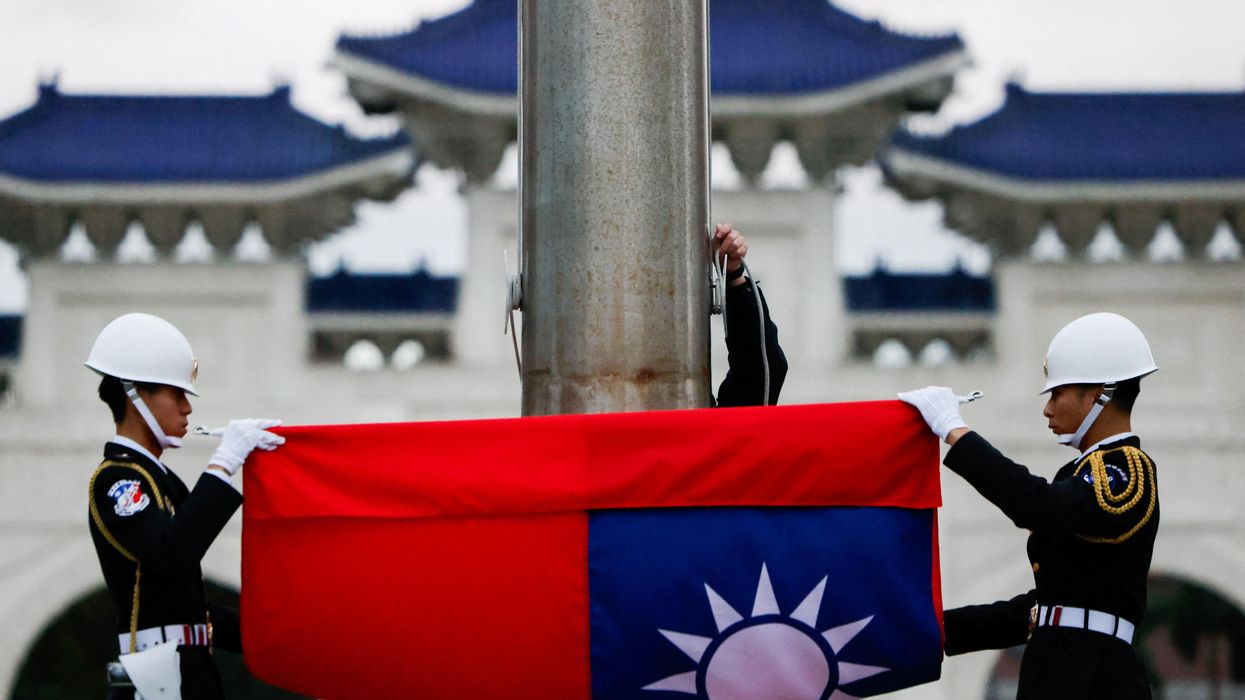A new report by an environmental testing group found excessive levels of radioactive contamination at a suburban Missouri elementary school. Hidden in the report was a stunning revelation: the Army first knew about a radioactive cancer-causing substance right next to the school in 2018 but didn’t tell the school district superintendent until 2022.
Jana Elementary School sits next to Coldwater Creek, where the government started dumping radioactive waste related to the Manhattan Project in the 1940s. For the last few decades, the U.S. Army Corps of Engineers has been in charge of the clean up.
In 2018, the Army Corps began testing the area close to the school, which serves over 400 students in the St. Louis suburb of Florissant. It was at this point, according to the new report by Boston Chemical Data Corps, that the Army Corps first detected thorium — a radioactive material linked to increased risk of lung, pancreatic, and bone cancer — near the school in 2018.
The report found that it wasn’t until four years later, in January of 2022, that the Army Corps informed the school district superintendent about its findings. Sources explained that the superintendent failed to immediately notify parents about the radioactive thorium. It wasn’t until parents and the Missouri Coalition for the Environment filed Freedom of Information Act requests that the full picture of the results of the Army’s report began to emerge.
So why did it take so long?
“That’s the million dollar question,” Christen Commuso, an advocate with the Missouri Coalition for the Environment, told Responsible Statecraft. “The second these radioactive substances enter your body, you’re exposed for life, so every second of exposure counts.”
Despite the health risks, the Army appears to have stonewalled the publication of its findings. At an open house organized by the Army Corps in 2021, the first in several years, parents of children of Jana Elementary School were eager to know if their child was exposed to radioactive waste.
One parent asked, “since Jana Elementary is a public school, why have details of sampling not already been released to the public?” After a long pause, the Army Corps official told her to submit a FOIA request.
“If anyone wants to obtain those types of documents they have to put in a FOIA request in order to obtain those types of documents,” the official said. “Those are not automatically put out for the public when it comes to specific areas.”
That parent was Ashley Bernaugh, the head of the parent-teacher association. Taking the Army’s advice, she submitted a FOIA request to try to get the results of their testing. When she finally received a response, it was a simple map with no information. “I had no way to interpret the map other than knowing there were red triangles and orange circles,” Bernaugh said.
Boston Chemical conducted follow-up indoor testing in August, which revealed the extent of health risks posed to children and teachers. The playground, library, kitchen, classrooms, and ventilation system had an excess amount of lead, radium, thorium, and other toxins.
Despite these new findings, it isn’t legally required to clean up the radioactive waste at the school according to its own standards set in 2005. “When the Army Corps took over in 2005 they actually increased the amount of thorium they were allowed to leave behind,” Commuso said. “This is nonsensical, no level of radioactive bomb waste is acceptable for a child to go to school in,” said Commuso.
The Corps also has no mandate to clean up lead, which Boston Chemical found to be at rates 22 times the expected amount in the kindergarten play area. According to the Center for Disease Control, there is no safe blood lead level for children.
The Boston Chemical report also found some shortcomings within the Army’s testing. Despite knowing there were dozens of highly radioactive sites just 300 feet away from the school, the Army didn’t bother testing the school buildings. “The Army Corps’ tests are incomplete and inadequate as no samples were collected from the school buildings themselves, nor were they collected from surface soils immediately surrounding the school buildings,” the report said.
In a statement to Responsible Statecraft, the Army Corps refuted the findings of Boston Chemical’s report. “The Boston Chemical Data Corp report is not consistent with our accepted evaluation techniques and must be thoroughly vetted to ensure accuracy,” wrote Phil Moser, Program Manager of the Army Corps’ St Louis environmental remediation program. “Our team will evaluate the Boston Chemical Data Corp report and methods used to create these results.”
The military has a well-documented pattern of abdicating environmental responsibility. Late last year, a jet fuel leak contaminated the drinking water for thousands of service members at Joint Base Pearl Harbor-Hickam, which has yet to be resolved. Meanwhile, “forever chemicals” known as PFAS are contaminating the drinking water on at least 328 military installations, while Congress continually underfunds cleanup efforts.
The community around Jana Elementary is all too familiar with broken promises of cleanup, forcing parents to navigate difficult decisions for their children.
“Our school is full of radioactive waste because other folks didn’t do their due diligence 80 years ago, 40 years ago, 20 years ago, all the way up until today,” Bernaugh said. “We don’t deserve this, we have an exceptional school community full of teachers who truly love their kids.”
To Bernaugh, money isn’t the problem, it’s a lack of priorities. “We know the Department of Energy and Pentagon have the funding, they have a bigger budget than some countries' economies,” she said “They could put in a new school in moments if needed, it’s just a matter of political will.”
















